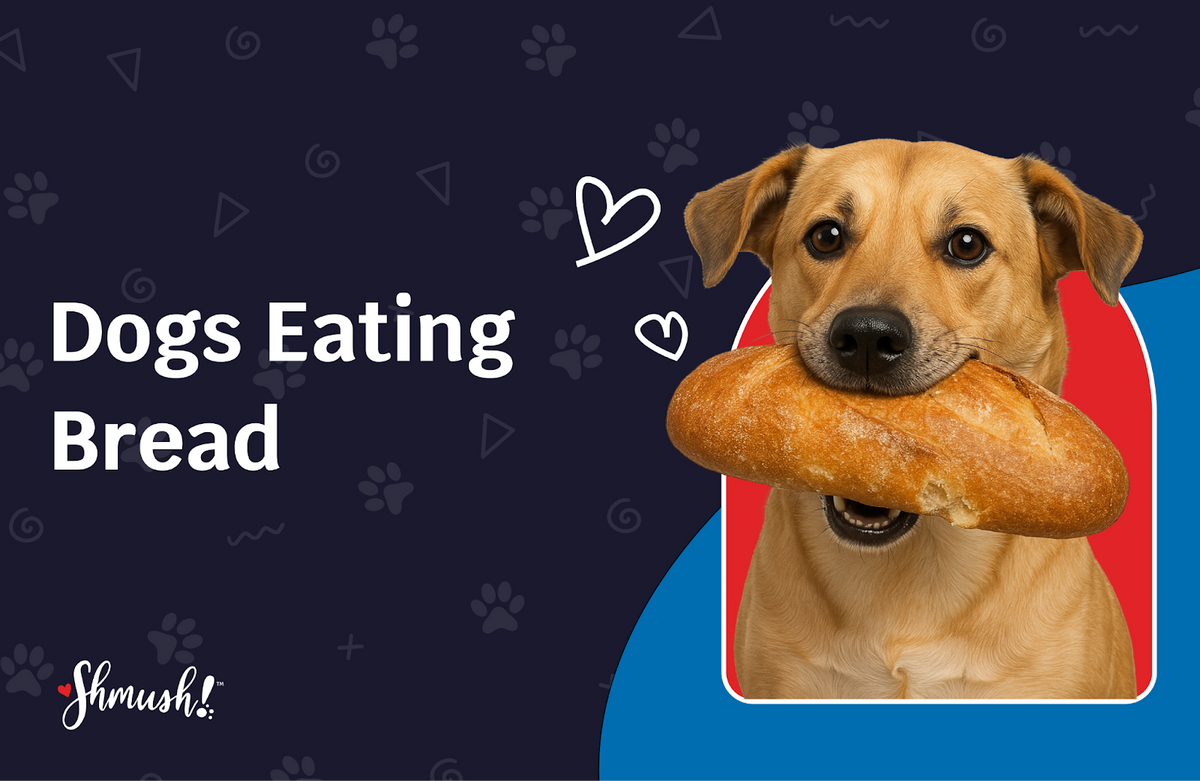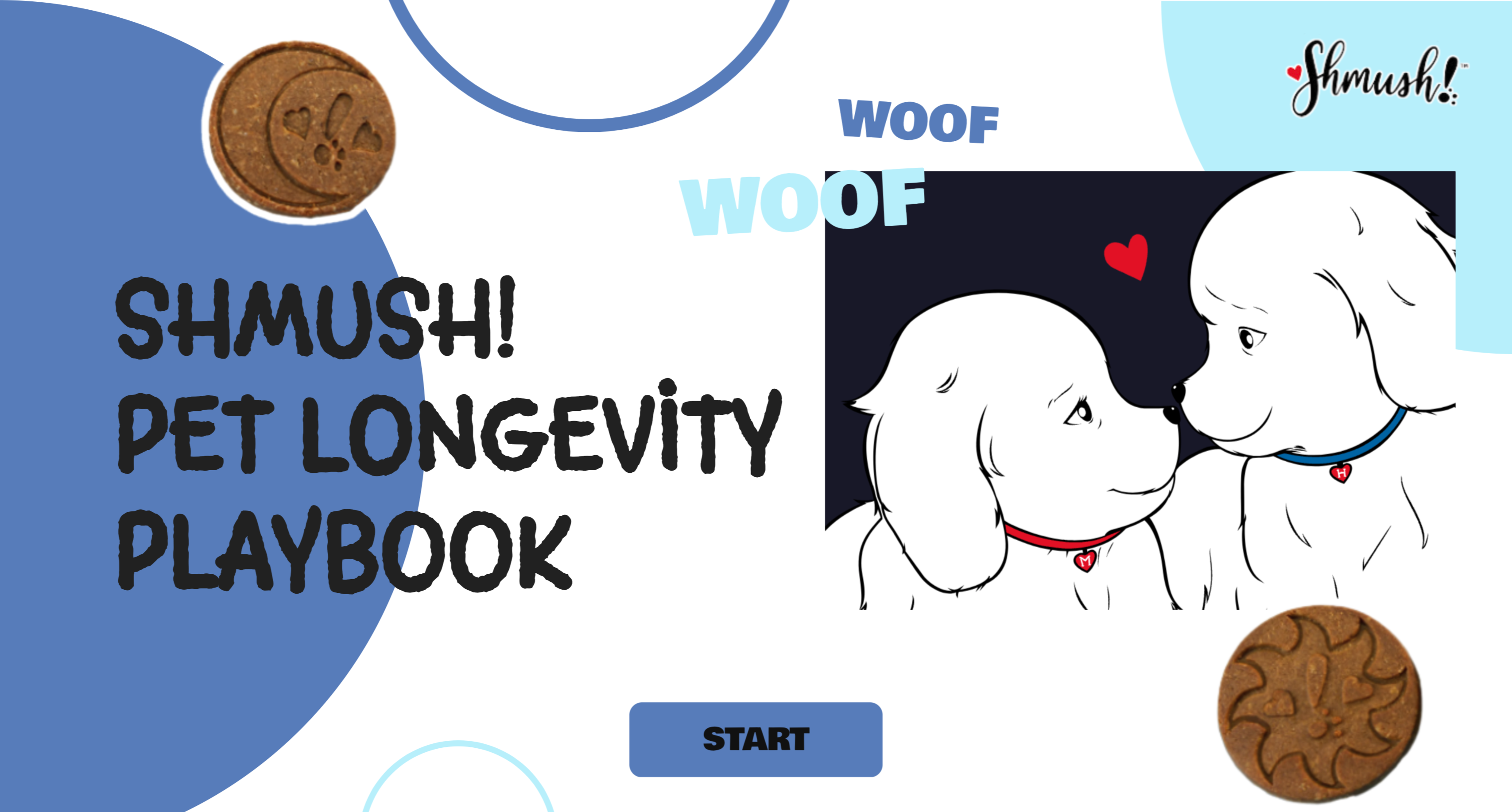

Can Dogs Eat Bread? Risks, Safe Types, and Vet-Approved Tips for Treating Your Dog
Introduction
Can dogs eat bread?
It’s a common question among dog owners, especially since bread is a staple in many human diets. If you’ve ever wondered whether it’s safe to share a slice of bread with your dog, the good news is that bread is generally safe for dogs in moderation—but there are some important factors to consider.
While bread is not toxic to dogs, it doesn't offer much nutritional value and should only be given as an occasional treat. Some types of bread, however, can be harmful to your dog due to certain ingredients or additives. In this blog, we’ll dive into whether it’s okay to give your dog bread, explore the types of bread that are safe, and highlight the risks that come with feeding bread to your dog. By the end of this post, you’ll know exactly how to incorporate bread into your dog’s diet safely and responsibly.
Is Bread Safe for Dogs?
Yes, bread is generally safe for dogs—but only when given in moderation and with a few important precautions. Plain bread, which doesn’t contain harmful additives like raisins, garlic, or sugar, is typically safe for dogs to eat. It can serve as an occasional treat or reward without causing harm. However, while bread is not toxic, it's important to understand that it doesn’t provide significant nutritional value to your dog.
Unlike dog food, which is specially formulated to meet your dog’s dietary needs, bread is primarily made of carbohydrates and lacks the essential nutrients that dogs require for optimal health. Therefore, bread should not be a major part of your dog’s diet but rather an infrequent snack or treat. It’s always best to ensure that the bread you’re offering is plain—meaning it should not contain ingredients like raisins, garlic, or sugar, which can be harmful to dogs.
Avoiding additives and preservatives is also crucial. Bread with artificial sweeteners, especially xylitol, is extremely dangerous for dogs and should never be given to them. Always check the ingredients list before offering bread to your dog to make sure it’s free from any harmful substances.
In short, while plain bread can be a safe and occasional treat for your dog, it should never replace a balanced, nutritious diet. Always keep moderation in mind and offer bread only as an infrequent snack.
Is Bread Healthy for Dogs? Nutritional Value of Bread for Dogs
While bread may be a tasty treat for dogs, it doesn’t offer much in terms of nutritional benefits. Unlike dog food, which is specially formulated to provide a balanced mix of proteins, fats, and vitamins, bread is mainly composed of carbohydrates and starch. These ingredients can give your dog a quick energy boost, but they don't provide the essential nutrients your dog needs for overall health.
-
Lack of Nutritional Benefits: Bread doesn’t contain the essential vitamins, minerals, and proteins that are critical for your dog’s growth, energy, and long-term health. While it may be enjoyable for your dog, it doesn't contribute to their nutritional requirements. Dogs need a balanced diet of high-quality protein, healthy fats, and specific vitamins and minerals that bread just can't provide.
-
Carbohydrates and Weight Gain: Bread is primarily made of carbohydrates, which, while important for energy, can contribute to weight gain if overfed. When dogs consume excess carbohydrates without burning them off through activity, the extra energy is stored as fat. Over time, this can lead to obesity, a common problem for dogs. Additionally, bread made with refined flour is not as nutrient-dense as whole grains, further diminishing any possible benefits.
Because of its high carb content and lack of nutritional value, bread should only be fed to dogs in small amounts and should never replace meals that provide the necessary nutrients for your dog’s well-being. If you're looking for treats that provide added health benefits, consider alternatives like Shmush! Breakfast Biscuits, which are packed with the vitamins and minerals your dog needs.
Vet-Approved Bread Types for Dogs
When it comes to feeding your dog bread, it’s essential to choose the right type to ensure it’s safe and suitable for their digestive system. Here are some vet-approved bread types that are generally safe for dogs when given in moderation:
1. Plain White Bread
Plain white bread is typically safe for dogs as long as it’s free of any added ingredients like raisins, garlic, or xylitol. While it’s not the most nutritious option due to its refined flour, it doesn’t pose any significant health risks for most dogs. White bread is soft and easy for dogs to digest, making it a simple, occasional treat. However, because it lacks fiber and essential nutrients, it’s best to give white bread sparingly.
2. Whole Wheat Bread
Whole wheat bread is a healthier alternative to white bread because it contains more fiber and nutrients, including some B vitamins and minerals. The added fiber can aid in digestion, making it a better option for dogs with mild digestive issues. However, dogs with wheat allergies or sensitivities should avoid whole wheat bread, as it could cause gastrointestinal upset or skin irritations. As with all bread, give it in moderation to avoid weight gain or digestive discomfort.
3. Whole Grain Bread
Whole grain bread is another good option, as it contains even more fiber and nutrients than whole wheat bread. Whole grain bread is made with a mix of whole grains like oats, barley, and brown rice, offering a wider range of beneficial vitamins and minerals. Like whole wheat bread, it should be offered in moderation. For dogs without grain sensitivities, whole-grain bread can provide a slightly more nutritious treat than plain white bread.
4. Rye Bread without Caraway Seed
Rye bread can be safe for dogs, but it’s important to ensure that it’s made without caraway seeds, which can be harmful to dogs. Caraway seeds can cause digestive upset and even toxicity in large amounts. Rye bread is often denser than other breads and can be a good alternative for dogs that enjoy variety. As with other types of bread, it’s essential to feed rye bread in moderation to avoid excess calories and carbs.
Types of Bread to Avoid for Dogs
While some types of bread are safe for dogs, there are certain varieties that should never be given to them. These types of bread contain ingredients that are harmful or toxic to dogs, and feeding them can lead to serious health issues. Here are the types of bread you should avoid:
1. Raisin Bread
Raisin bread should be strictly avoided, as raisins are highly toxic to dogs. Even small amounts of raisins can cause severe reactions in dogs, including kidney failure, which can be fatal. Symptoms of raisin toxicity include vomiting, lethargy, and a loss of appetite. Since the amount of raisins in raisin bread can vary, it’s always better to err on the side of caution and avoid feeding your dog any raisin bread altogether.
2. Garlic or Onion Bread
Garlic and onions are both part of the allium family, and both are toxic to dogs. Even in small amounts, they can cause severe health issues, including damage to red blood cells, leading to anemia. Symptoms of garlic or onion toxicity include weakness, lethargy, and pale gums. If you suspect your dog has eaten bread containing garlic or onion, seek veterinary care immediately. Bread that contains these ingredients should never be given to dogs.
3. Bread with Artificial Sweeteners (Xylitol)
Bread containing xylitol, a common artificial sweetener, is extremely toxic to dogs and should always be avoided. Xylitol can cause a sudden drop in blood sugar, leading to symptoms like vomiting, lack of coordination, and seizures. In severe cases, xylitol poisoning can result in liver failure or even death. Always check the ingredients before giving any bread to your dog, and make sure it doesn’t contain xylitol or any other artificial sweeteners.
4. Bread with High Sugar Content
Breads with high sugar content, like sweet rolls or pastries, should also be avoided. Excessive sugar can contribute to weight gain, leading to obesity and other health problems such as diabetes. Dogs do not need sugar in their diet, and feeding them sugary bread can lead to an imbalance in their diet, affecting their overall health. Stick to plain, unsweetened bread when offering this treat to your dog, and always serve it in moderation.
Risks and Considerations of Bread Consumption for Dogs
While bread is generally safe for dogs in moderation, there are important risks and considerations to keep in mind when feeding it to your furry friend:
-
Bread Dough Risks: One of the most significant risks associated with bread is raw dough. If a dog eats bread dough, it can rise in the stomach, fermenting and releasing ethanol (alcohol). This can lead to alcohol poisoning, which is a serious health issue. Symptoms of dough ingestion include bloating, weakness, vomiting, and even seizures. Always keep raw dough out of reach of your dog to prevent these dangers.
-
Excess Bread Consumption: Like any treat, bread should be given in moderation. Too much bread can lead to weight gain due to its carbohydrate content and lack of essential nutrients. Additionally, overfeeding bread can cause digestive issues, such as bloating, gas, and diarrhea. Bread should never make up more than 10% of your dog’s daily caloric intake.
-
Treat Bread as an Occasional Snack: Bread should only be offered as a moderate treat, not a regular part of your dog’s diet. It's important to ensure the bread is plain, free from harmful ingredients like raisins, garlic, or sugar, and to consult your vet if you’re unsure about adding bread to your dog’s food routine.
-
Misconception About Bread and Upset Stomachs: Many dog owners mistakenly believe that bread can help settle an upset stomach. However, bread is not an effective remedy for gastrointestinal issues. A bland diet of rice and boiled chicken is recommended for dogs with stomach problems, as it is easier on their digestive system and can help restore balance.
In summary, while bread can be a safe and occasional treat, it’s important to be aware of the risks, including alcohol poisoning from the dough and the potential for digestive upset and weight gain from excessive consumption. Always feed bread in moderation, and consult your veterinarian if you have any concerns about its impact on your dog's health.
Conclusion
In conclusion, bread can be a safe treat for dogs when given in moderation and with careful consideration. It’s important to choose plain bread, free from harmful ingredients like raisins, garlic, and xylitol, and to feed it only occasionally as part of a balanced diet. While bread can provide a quick, tasty snack for your dog, it should never replace nutritionally complete dog food.
Always be mindful of the portion size and avoid overfeeding to prevent weight gain and digestive issues. Additionally, raw dough should be kept far from your dog’s reach due to the risk of alcohol poisoning. Remember, bread is not a solution for an upset stomach, and a bland diet of rice and boiled chicken is a much better option for gastrointestinal problems.
By following these guidelines and consulting your vet when in doubt, you can safely incorporate bread into your dog’s treat routine. If you’re looking for healthier alternatives that support your dog’s overall wellness, consider exploring nutritious options like Shmush! Bedtime Biscuits are designed to provide digestive support and essential nutrients for your dog’s health.
Enjoy sharing safe, occasional treats with your dog while keeping their health in mind!

Free Pet Longevity Playbook
Expert tips for helping your dog live a longer, healthier life—delivered straight to your inbox.